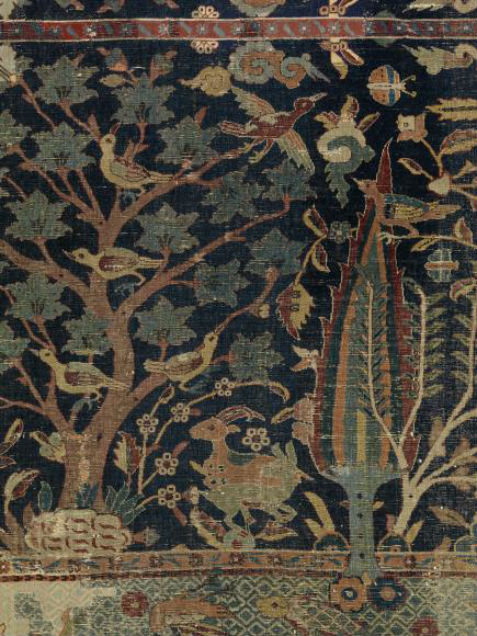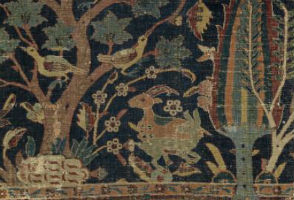
NEW YORK –The “Wagner” Garden Carpet—a late 17th-century Persian carpet never before seen in the United States—will be on view at The Metropolitan Museum of Art this summer and fall in the special installation “Eternal Springtime: A Persian Garden Carpet from the Burrell Collection,” opening July 10.
The earliest example of a garden carpet outside of Asia, and produced under the Safavid dynasty in Kirman, southeastern Iran, the carpet is one of the masterpieces of the Burrell Collection. The unprecedented loan of this rare and important textile is possible only because the Burrell Collection is currently undergoing a refurbishment of its building and redisplay of its collection in Glasgow, Scotland.
At The Met, the “Wagner” Garden Carpet will be presented along with an additional eight historical carpets from the museum’s collection, also made in Iran and newly installed for this purpose, which will provide context. The carpets will be located in the Sharmin and Bijan Mossavar-Rahmani Gallery (gallery 462), which features masterpieces created under the imperial Safavid dynasty in the 16th and 17th centuries and its successors.
Through their design, garden carpets evoke an image of the ancient Iranian “chahar-bagh”—four-quartered garden with water channels that divide the walled garden and meet at a central pool. In the “Wagner” carpet, the garden—which depicts eternal springtime—also teems with life. The trees, bushes and shrubs are abloom; animals (both predators and prey), birds of all types, multicolored butterflies and moths inhabit the landscape; and fish and ducks populate the waterways. Shimmering water is illustrated by a lattice pattern drawn with varied thicknesses of line and color.
The “Wagner” Garden Carpet measures 531 x 432 cm (17.42 x 14.17 feet) and was woven with cotton warps; wool, cotton and silk wefts; and wool pile. Kirman was a well-known carpet-making city in the Safavid period. The carpet acquired the name Wagner from a previous owner.
Education programs include a Friday Lecture by Dr. Noorah Al-Gailani, curator of Islamic Civilisations, Glasgow Museums–The Burrell Collection, on Sept. 28, at 4 and 6 p.m.
This event is part of MetFridays: New York’s Night Out.



